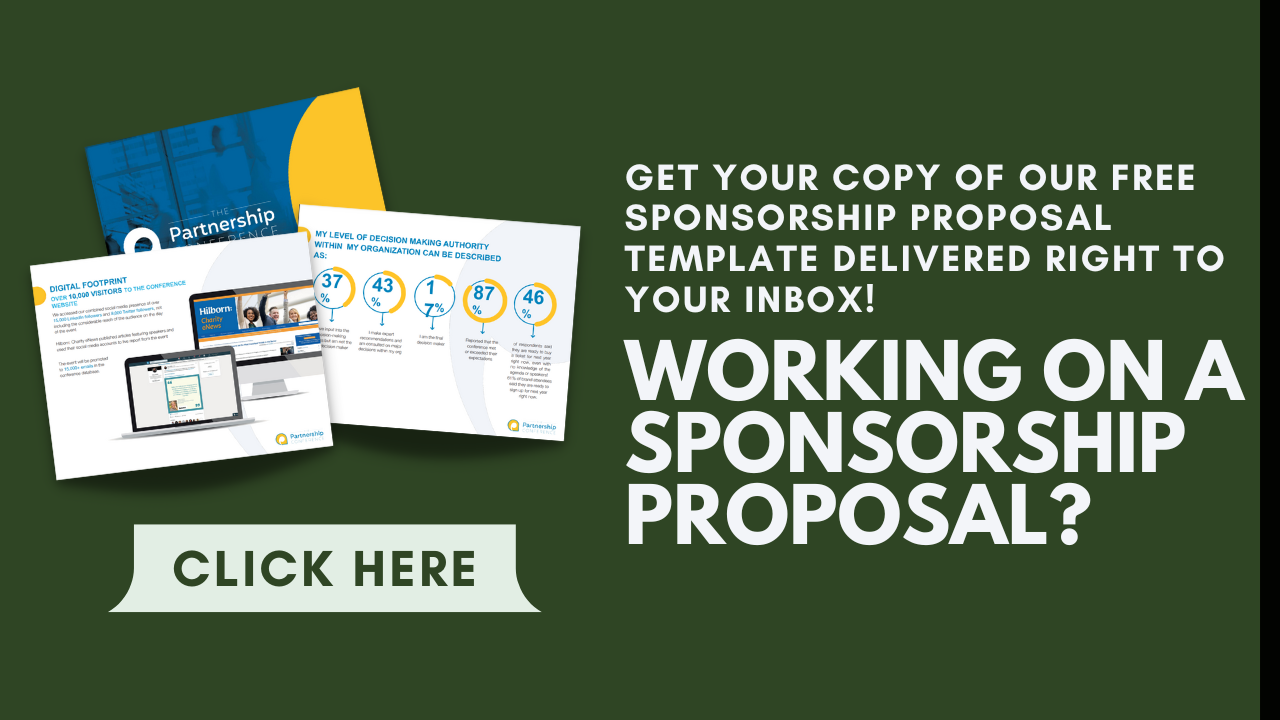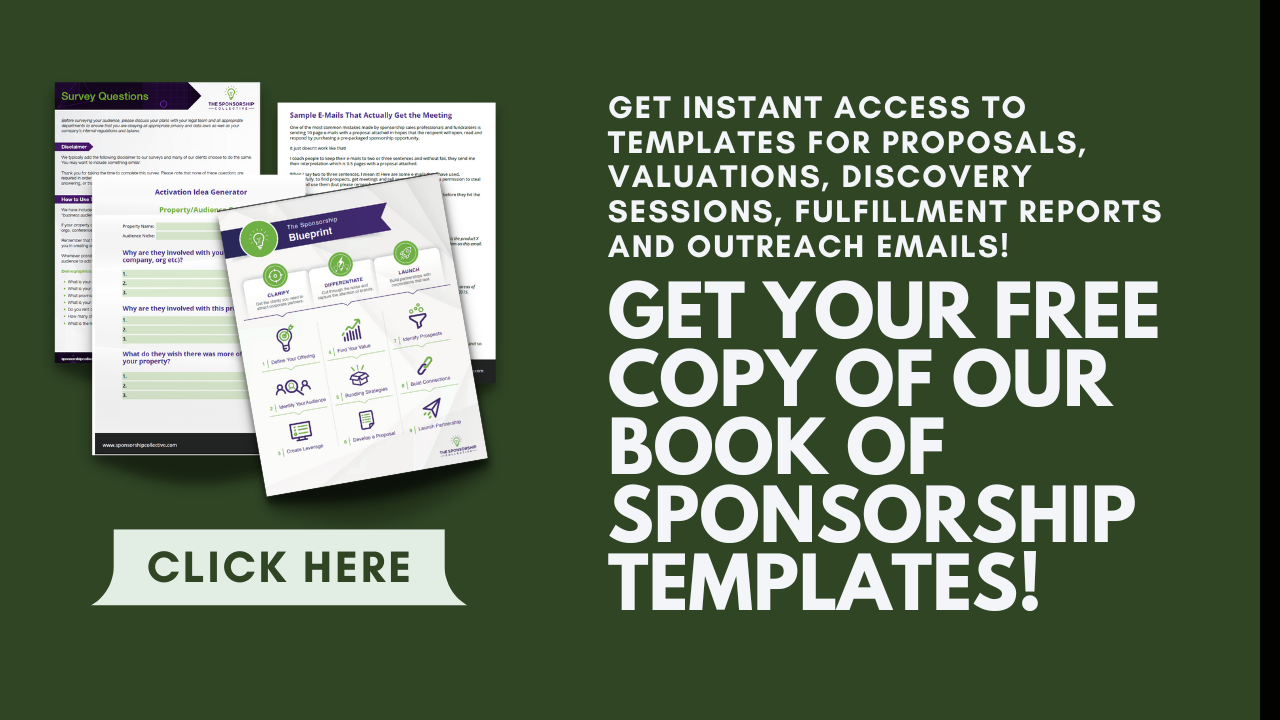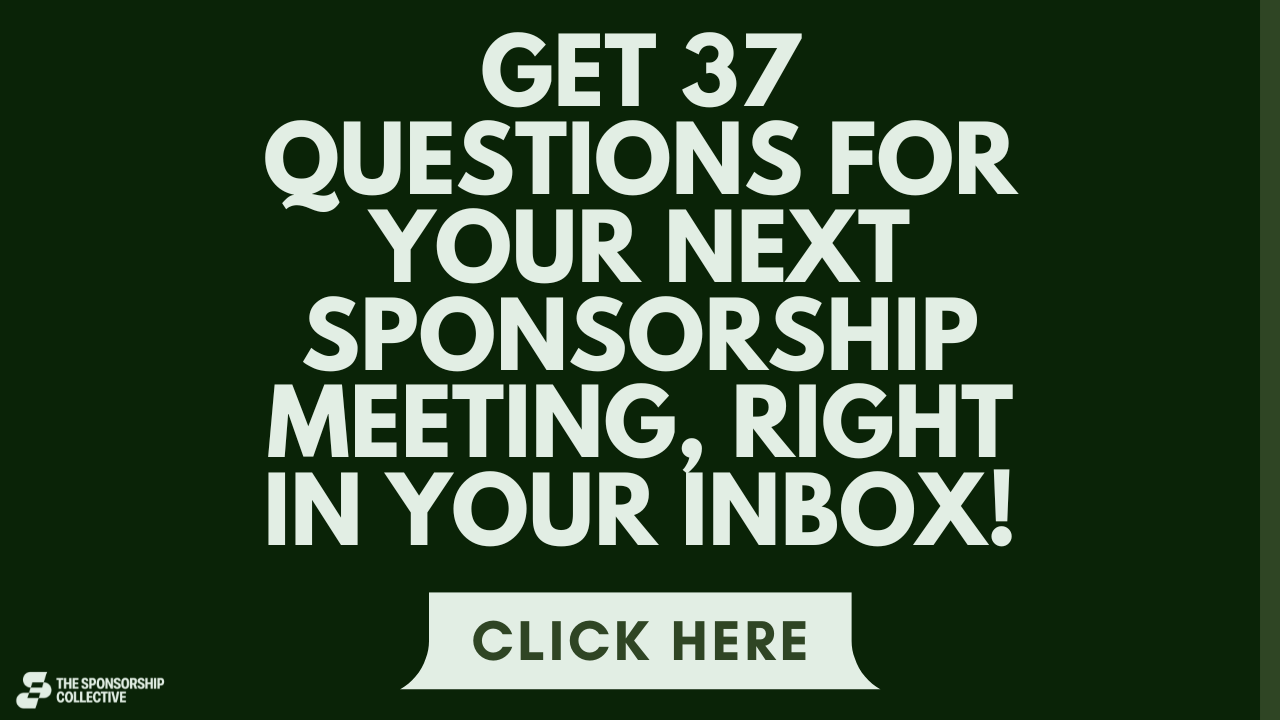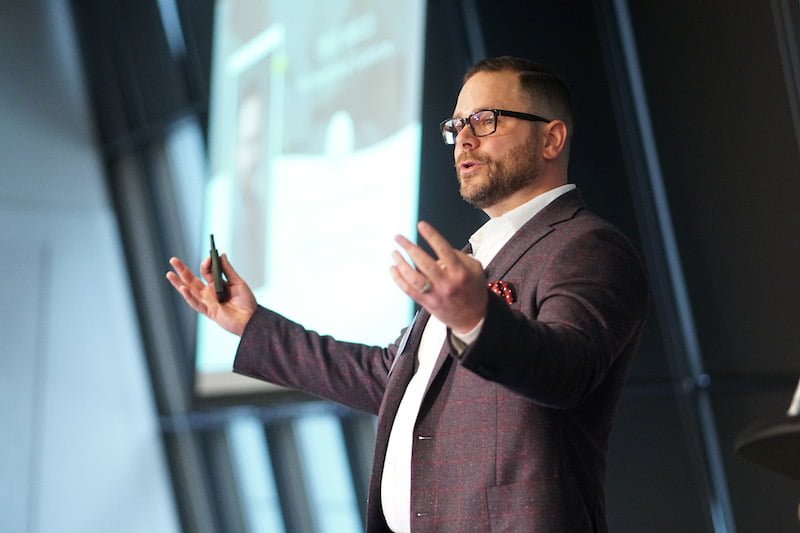I love a good read, don’t you?
One of the books on my 2021 reading list was The 4 Disciplines of Execution: Achieving Your Wildly Important Goals by Jim Huling, Sean Covey, and Chris McChesney. I got a lot out of it, and I think you would too if you gave it a read.
Now, I’ll be honest, it’s not a book about sponsorship or sales, but that’s okay. I always tell my clients to read books outside of sponsorship because you never know where you’ll find an idea that you can then apply to your sponsorship program.
One of my biggest takeaways from the book is this: every day, you can do small things to get closer to achieving your goals, such as making sponsorship sales.
What are those things? That’s just what I’ll explain in this post, so let’s dive right in!
Lag vs. Lead Measures
Here’s something else I learned in The 4 Disciplines of Execution, the difference between lead measures and lag measures. Let me take a moment to define both terms for you.
Lag measures, according to the book itself, “track the success of your wildly important goal.”
In other words, lag measures are your KPIs, your metrics for success. They include such elements as revenue, event attendance, customer satisfaction, email open rates, social media followers, and sponsor satisfaction.
Lead measures “track the critical activities that drive, or lead to the lag measure. They predict the success of the lag measure and are influenced directly by the team.”
To help explain lead measures better, the book mentions the goal of losing weight. Weight loss would be your lag measure. The steps you take to get there–such as cutting out junk food and exercising–are your lead measures.
5 Sponsorship Lead Measures to Begin Tracking Today
So, keeping those definitions in mind, which lead measures must you start watching to increase your sponsorship sales? Here are a few to get you started.
Prospect Research
Very few if any sponsorship relationships will materialize out of thin air. Some might come to you courtesy of recommendations or referrals, but for the most part, it’s up to you to vet which target sponsors you might be interested in working with.
That begins with prospect research. It’s easy to fall into the trap of thinking that you need to know every last little thing about a sponsor company so you don’t end up working with someone who supports bacon cheeseburgers when your company is vegan.
If you remember my post on motion versus action, I mentioned that motion activities are those that seem to progress your sponsorship program while action activities do lead to progress. Endless prospect research is motion.
Yes, you’re learning a lot about target sponsors, but if you never end up working with that sponsor, then who cares what company they partnered with 15 years ago? Those details are extraneous. Heck, even if you do win sponsorship with that company, those details are still extraneous.
Your lead measures should be focused on how many prospects you research per day or per week. That number should be way higher than one or two!

Outreach
Another sponsorship lead measure is the amount of outreach you’re doing. More so than the amount though, I’d recommend gauging important metrics like the quality of your messages and the rate of responses.
After all, anyone can send a bulk email to 100 sponsorship prospects and think, “hooray, I achieved my outreach goals for the day.” Yet impersonalized emails as part of a mass email chain are going to get very few opens and even fewer replies.
Don’t just track email outreach either, but every type of sponsorship-related outreach you’re doing. For example, if you go to an industry networking event, jot down the number of prospects you meet.
How many phone numbers or email addresses did you collect? How many business cards did you hand out? When you got back, how many people did you contact and get a response from?
If you print out 200 glossy business cards and hand them all out but no one contacts you, then the time and expense of printing those cards were for naught.
Follow-up Tactics
Listen, you might not get a response the first time you try connecting with someone at the sponsor company. That’s why you need to make follow-up tactics a lead measure your company actively tracks.
Do you give up if it’s been 48 or 72 hours and you hear nothing back? You shouldn’t. You need to track how often you’re following up as well as what your effort reaps.
Did the target sponsor call you back after you left a voicemail? Maybe it took a second email to get a response?
You also must track whether you’re following up correctly. For instance, calling a target sponsor three hours after your first call because you haven’t heard anything is not following up correctly. Neither is sending email after email without getting a reply first.
The third lead measure related to follow-ups to pay attention to is your messaging. Are you asking for sponsorship in the first email? That’s the wrong way to go. Are you attaching your sponsorship proposal in the email before you even had a meeting with the target sponsor? Also incorrect.
Here are some email templates you can use to make initial contact with a target sponsor. This messaging in these templates is very meaningful. You’re trying to forge ahead with a potential partnership without asking for money outright, and these templates can help you do that.
Discovery Sessions
As I always say on the blog, the goal of communicating with the target sponsor early on isn’t to get them to decide whether they want to sponsor you. Instead, you’re trying to convince them to agree to a discovery meeting or call.
The discovery session is for getting familiar with one another. The discussions had during this meeting augment the prospect research you did earlier, as you can ask questions about things that you couldn’t find by combing the Internet.
Asking the right questions is important. In this post, I highlight five discovery questions that should go on your list ahead of your discovery session with the target sponsor. These questions pertain to the sponsor’s audience, that audience’s buyer motivations, and the sponsor’s goals.
If you go into a discovery meeting and ask irrelevant questions like “who were the last five companies you sponsored?”, you’re going to get irrelevant answers. Knowing who the sponsor worked with last doesn’t tell you much of anything, especially not about how you can fulfill the target sponsor’s goals.

Custom Proposals
Another great lead measure is the number of custom proposals you send out. Yes, that’s right, I said custom proposals.
Every time you write a sponsorship proposal, you need to customize the bulk of it. Your audience data is a great example. Not every sponsor is going to care as much about the age or location of your audience. They might be more interested in their occupation, income, or buyer behavior.
You’ll have to come up with a new assets package for every sponsorship opportunity you seek. Recycling activation ideas is an ill-advised idea as well.
If you’re feeling stumped on how to write your sponsorship proposal, I just published a new template that will come in handy!
This metric comes with a caveat. Like anyone can send 100 emails, anyone can attach a sponsorship proposal, mail it 100 times, and call it a day. You want to track how many target sponsors want to see your proposal, which is a very different thing!
Tips for Fulfilling Your Sponsorship Sales Goals
Now that you know which lead measures to prioritize, here are some tips for your sponsorship program so your company or organization might see more sponsorship sales this year.
Be Realistic in Your Lead and Lag Measures
Having an end goal of wanting to lose weight (your lag measure) is one thing, but saying you want to lose 100 pounds in two weeks is another. That’s just not realistic. When your lag measure is wildly unattainable, so too will the methods you use to get there.
For instance, to drop weight fast, you might try fad diets or crazy exercise routines that leave you exhausted, hungry, and possibly injured.
It’s okay to have wild goals. I think we all do, to an extent. You have to pull your head out of the clouds a bit when it comes to sponsorship though.
If your goals are doable but just too large, then try breaking them down into smaller goals and see how much more attainable they are then.
Set Targets
If you don’t have daily or weekly targets you’re trying to hit in your sponsorship program, then you risk falling into motion activities instead of action. You’re spinning in circles, expending energy but getting nothing out of it.
Only you know how many discovery calls and prospect follow-ups you need to get a sponsorship sale, but that should be your target going forward.
If you’re underachieving, you have to ask yourself what you’re not doing enough of or what you could be doing too much of (such as researching when you should be actively reaching out to sponsors).
Focus More on Lead Measures Than Sales Measures
I know that week to week, two discovery calls or five custom proposals doesn’t seem like much, but it adds up over time. Each activity you do that gets you closer to your sponsorship goals increases your momentum. Your sponsorship sales will naturally climb as a result.
If you don’t believe me, discard tracking your lead measures for a week. Your sales numbers will begin to slip.
Conclusion
Your sponsorship program’s success or failure is dependent on the actions you took (or didn’t take) over the last 30 to 60 days. I know that sounds scary, but it shouldn’t be! Now the power is in your hands to shape the future of your sponsorship program, and all it begins with tracking the right lead measures.
If you’re having a hard time getting started with sponsorship and you need a little extra help, I highly recommend my free training called How to Grow Your Sponsorship Program. You’ll learn where your time and energy need to go to meet more of your sponsorship goals!

- About the Author
- Latest Posts
Chris Baylis is the Founder and Editor-in-Chief of The Sponsorship Collective.
After spending several years in the field as a sponsorship professional and consultant, Chris now spends his time working with clients to help them understand their audiences, build activations that sponsors want, apply market values to their assets and build strategies that drive sales.
Read More about Chris Baylis

